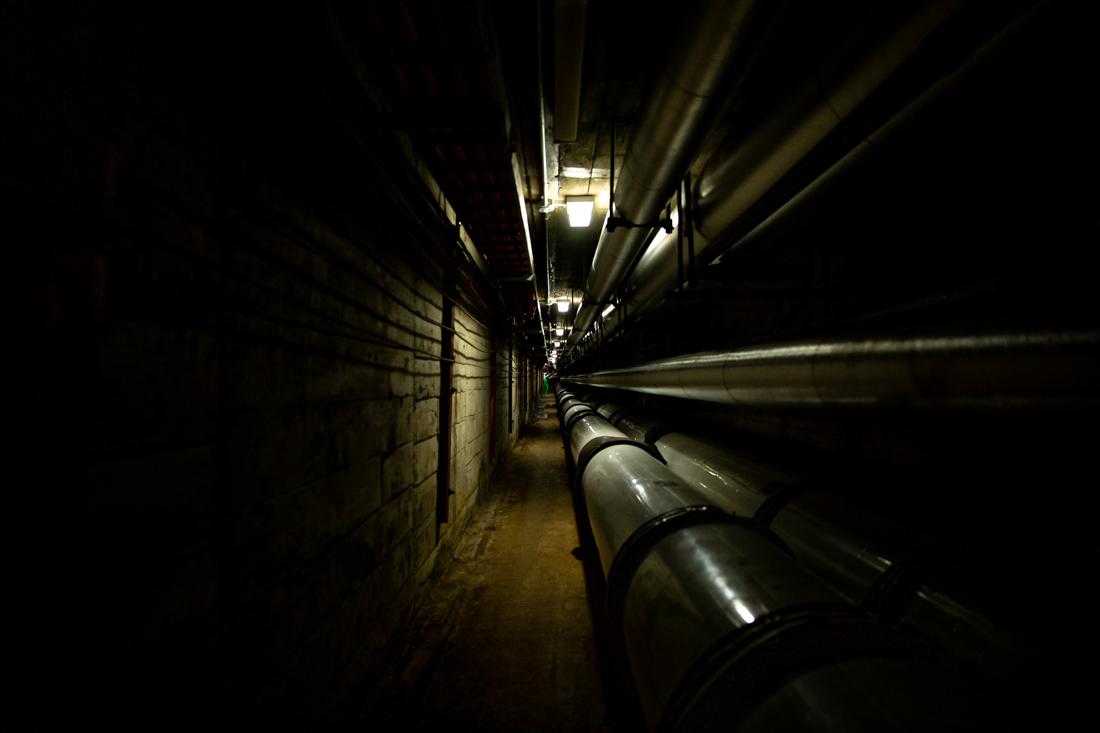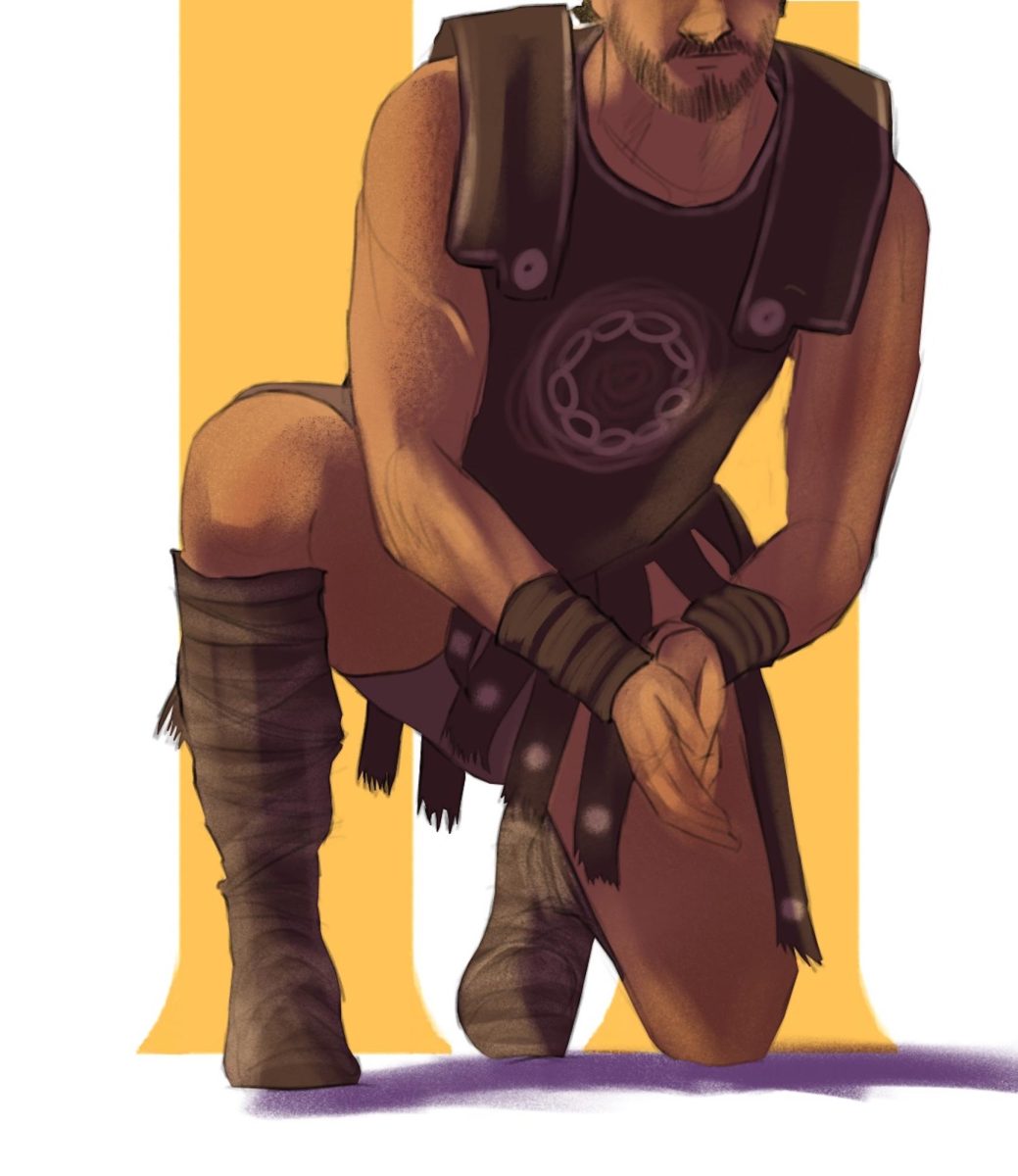Just under the surface of the University of Oregon sidewalks, there is a maze of high-pressure steam pipes, electrical wires and long, dimly lit pathways. The only sound beneath the surface is the dripping of water and the rumble of the EmX a few feet above. There’s not much space, but still gusts of hot wind rush through, making everything at least 15 degrees warmer.
The UO tunnels aren’t the prettiest structure on campus, but they are the heart and veins of the entire university.
“The tunnels started to provide utilities in a safe secure place underground, so that they’re not above ground and interrupting the beautiful landscaping and architecture of the university,” said Kyle Wilson, utilities maintenance manager.
These tunnels extend up to five miles around UO, with its appendages extending west toward Lillis Complex, south under McArthur Court, and its newest branch that reaches east under Global Scholars Hall, said Paul Langley, utilities operations superintendent.
They serve as the university’s lifeline to the power plant. From the boiler room the tunnels snake out all through campus, feeding every single building in a vast and compact network of pipes, Langley said.
The tunnels are how UO gets its utilities out to all the buildings, Langley said. This includes steam lines that supply heating, cooking, showers and other things that need hot water. There’s also chilled water and condensed steam lines, as well as electrical wires all running underground.
Keeping all these tunnels safe and inspected is a constant process, Langley said. Sections of the tunnels are checked usually on a weekly basis, with the entire process taking about a month to complete.
Sean Woods, the Campus Planning & Facilities Management’s lead pipe and steam fitter, inspects the tunnels and makes sure the pipes and wires are in working order.
“Someone’s going in the tunnels every day though at some point somewhere for something,” Woods said. “Sometimes you find yourself in the tunnels every day for four or five months and then you get a job in the building and you’re there for two to three weeks and you don’t leave, so it’s really just random.”
Woods said that some parts of the tunnels can get extremely hot because of the superheated steam running through the pipes.
“If it’s next to some exposed steam or some stuff you can’t insulate, if you get next to that it’s gonna be hot,” Woods said. “Or if you’re at the end of a dead end and there’s not much ventilation.”
“The hottest I’ve seen in there probably about 125,” he said.
Despite the heat, years ago many people would try to break into the tunnels. Langley said they have found graffiti from the ‘70s and ‘80s all around the tunnels, and apparently Dungeons & Dragons crews would sneak in to play. However, in the early ‘90s the UO’s Central Power Station stepped in and changed everything.
“I think it was ‘92 that they took it over; they started locking all the doors and maintaining it because before that it was just up to the facilities people to turn a valve off in the summer and turn it back on in the winter, and no one really took care of it,” Langley said. ”So it fell on to the Central Power Station in the early ‘90s, and they’ve done a good job.”
Despite widespread UO rumors of the tunnels being haunted, neither Langley, Wilson or Woods could think of any time they had seen a ghost.
Even though it’s been 30 years since Central Power Station took over, the tunnels still aren’t exactly a tourist destination.
“There’s roaches and rats and stuff in there, it’s not a real pleasant place to be,” Woods said. “I mean I wouldn’t hang out in there, and I work in there all the time. I wouldn’t sit around in there because I’m not a big fan of roaches.”
Even a few yards down from the tunnel entrance, groundwater, which Woods said is full of bacteria, seeps in from above, and some parts of the tunnels are only large enough to crawl through. Squeezing between scorching steam pipes and live wires, workers have to walk in single file. Then there are the dangers they regularly have to face.
“Bumping your head, burns, slips, trips, strains from crawling through places. I’d say burning yourself or hitting your head on something would be your two biggest things in the tunnel,” Woods said.
Workers are required to wear hardhats and carry flashlights and radios in the tunnels, Langley said, just in case the worst happens. There are also the more rare but real dangers of loose high voltage lines, steam pipe ruptures and water breaks that could flood the tunnels.
“We try and make a presence down there,” Wilson said, “so we can catch these things quickly.”
A UO-clad spiral staircase descends many feet beneath the ground. A vast network of utility tunnels lives beneath the University of Oregon campus and is used for maintenance as well as providing steam, electricity, water and compressed air from the Central Power Station to the entire campus. (Sarah Northrop/Emerald)








